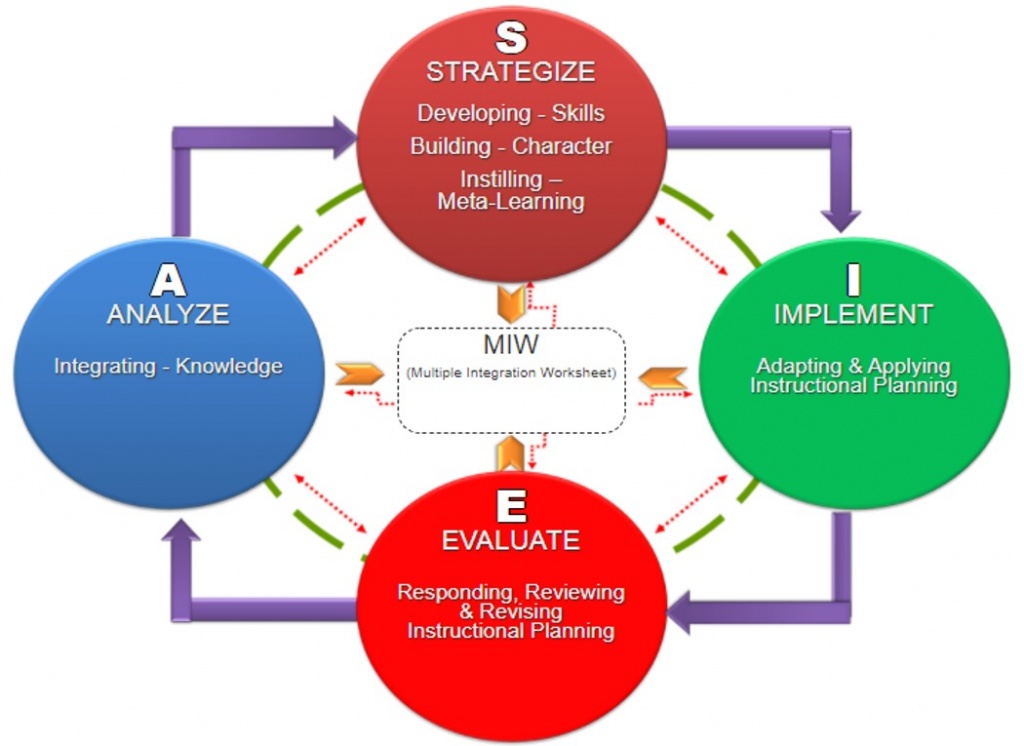The Integral ASIE Instructional Design Model is an innovative 21st Century teachers’ designing tool that responds to the challenges and perhaps provides a solution in establishing a dynamic design of instruction for the current and the future educational needs.
- CIDS is a platform for various instructional planning including e-learning for students. While the ASIE Integral Instructional Design Model has a dual function – (i) as an Instructional Planning Tool (ii) as a 21st Century Instructional Design Model.
- The platform helps teachers to unpack the curriculum standard to meet the needs of Education 4.0 (Education 4.0) as well as the needs of current and future education in the era of Revolution 4.0.
- Its features can be customized according to the creativity of teachers in a differentiated classroom environment to achieve learners’ outcomes in their respective schools.

- ASIE refers to Analyze, Strategize, Implement, and Evaluate.
- It is a transformation of ID model which is required in redesigning, reconstructing and reengineering academic directions in visualizing the current education landscape towards preparing learners to the Fourth Industrial Revolution – IR4.0 while facing the challenges of the newly emerging smart Society 5.0.
- This “learner-centered approach” interactive online ID model in designing instruction, engage learners at exploring and unleashing their potentials in generating and creating ideas through Higher Order Thinking Skills (HOTS) activities.
- It is a simple and practical planning tool that fulfill the features of current and future education needs.
- It allows teachers strategize approaches, methods, and activities for learners to determine their own choices that will inspire them at engaging with learning activities joyfully while preserving the characteristics of teachers’ professionalism in learning and facilitating procedures.
- It is a constructive process in designing the instructions, which provides practitioners in education a valuable tool and perspective, to enhance the quality of instructions for all learners regardless of their capabilities.
- This model has a high impact on teachers and learners in the learning process through the options available in providing opportunities for them to discuss and share materials, experiences and their creativities with other colleagues throughout the country towards creating a high-tech learning approach fulfilling the requirements of the current education landscape.
- Theoretically, by looking at various perspectives, CIDS, as its name applied, has the capacity to collaborate with many elements in the instructional planning. The Integral ASIE Instructional Design Model encompassed in CIDS has the features of IHE (integrative, hybrid, eclectic).
- Looking at the features on the components and items of the model, it can also be classified into the hybrid instructional design system category though basically it is a classroom-based ID model but it has a wider scope which goes far beyond the four walls involving the virtual environments learning which give rooms to the blended type of learning as well as to make the possibility of flipped classroom being practiced.
- It follows an eclectic approach to the instructional design whereby a designer (user) blends ideas from multiple learning theories to construct a learning experience that works better than from only one theoretical influence. Hence, the paradigms of behaviorism, cognitivism, constructivism, and connectivism are likely being considered and applied in the various instructional planning procedures, unlike some of the conventional models that initially designed for Instructional System Development (ISD) (Seel, N. M. 1997, Gustafson K.L., Branch R.M. 2002) which make this model differs from other conventional ID models.
